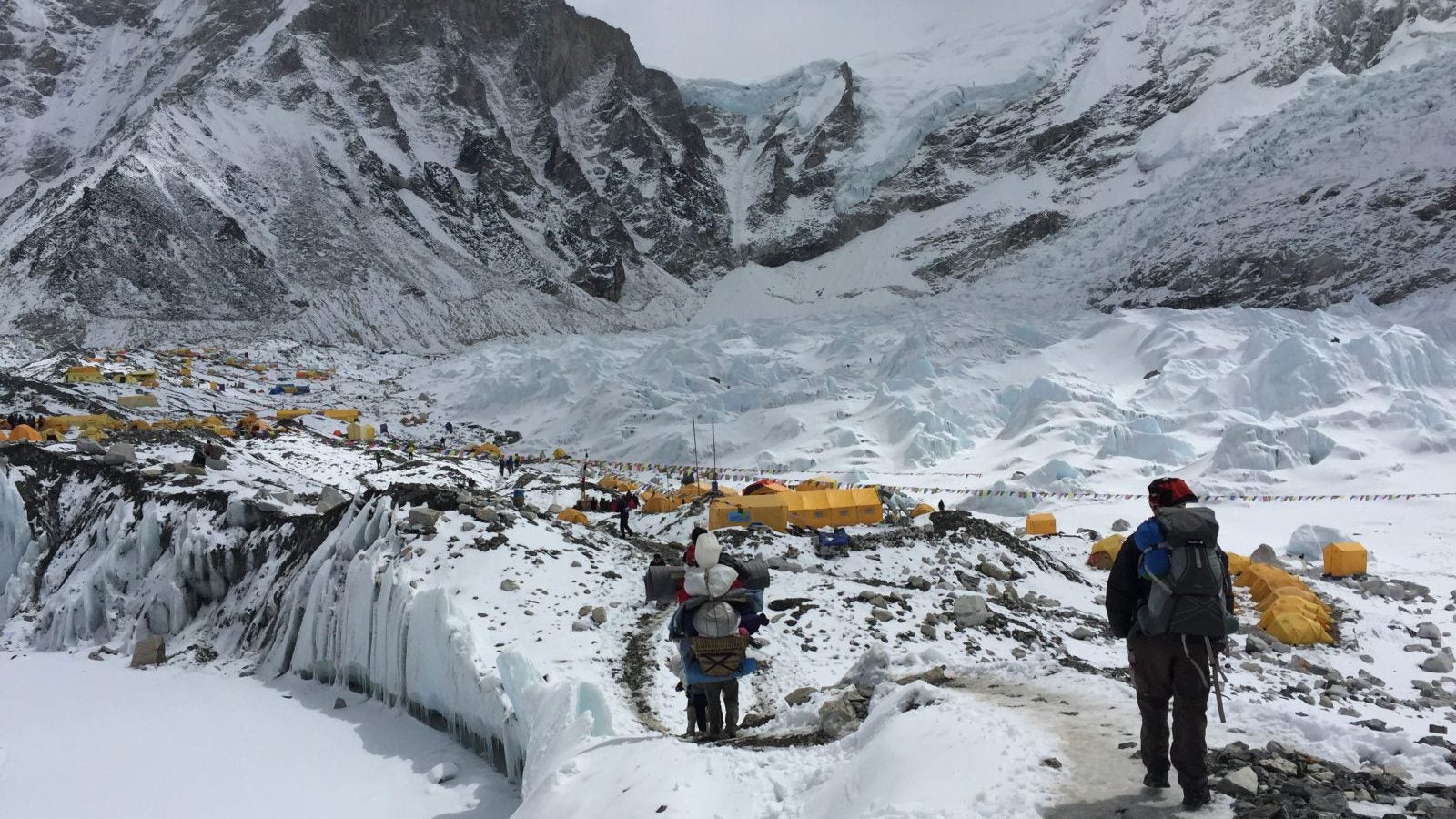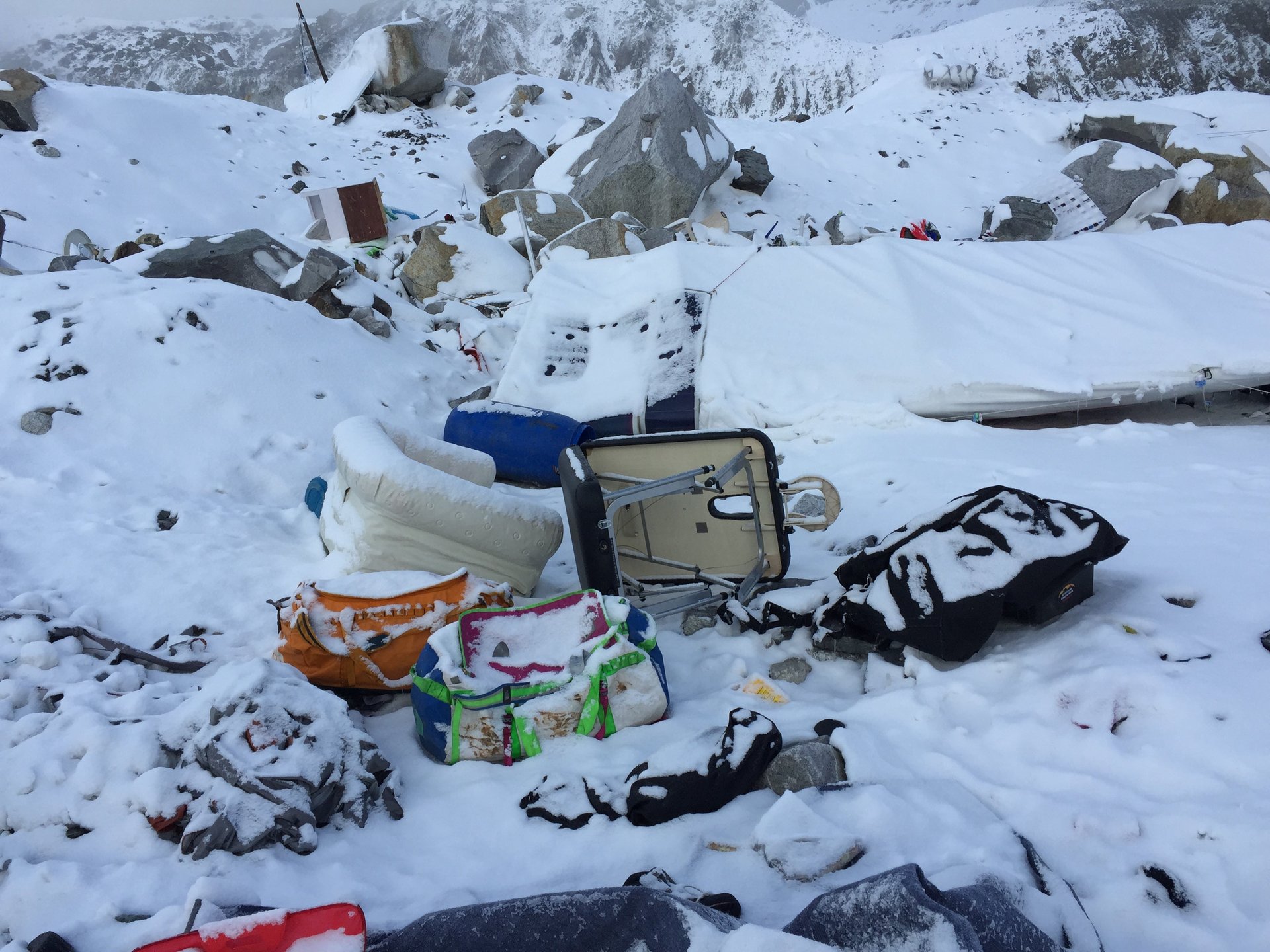A year after the Nepal earthquake, climbers are back to business on Mount Everest
The earthquake in Nepal on April 25, 2015, destroyed thousands of lives and entire villages throughout the country. But it was the posh seasonal community full of foreigners at the base of Mount Everest whose travails attracted the most attention in the immediate aftermath.


The earthquake in Nepal on April 25, 2015, destroyed thousands of lives and entire villages throughout the country. But it was the posh seasonal community full of foreigners at the base of Mount Everest whose travails attracted the most attention in the immediate aftermath.
The world was understandably interested in the drama the quake had brought to this already dramatic place, with its mix of high-stakes, high-altitude ambition and athleticism. From the start, the 2015 climbing season had a shadow cast over it, from a deadly accident that cut short the previous season when it killed 16 Nepalese guides and raised serious questions about the treatment of Sherpas.
The 2015 earthquake seemed guaranteed to force not only another hasty retreat from the mountain but a serious reckoning with its future. But Everest is still Everest. The climbers attracted to its difficulty and danger would find no less of either after an event like last year’s. Everest also is a money maker, and those determined to cash in on it aren’t easily deterred by threats from mother nature.
And so, serious reckoning or not, a year after the 7.8-magnitude tremor unleashed an avalanche on Everest Base Camp, killing 22 people and shuttering the climbing season early, plenty of people have returned to the mountain.
Even those who suffered major losses are back.
Take Garrett Madison, who runs Madison Mountaineering, for example.
Madison’s girlfriend, Eve Girawong, was at Base Camp last year working as the doctor for his expedition. She was killed in the avalanche.
Madison and his 2016 team are at Camp I on Everest right now.
Adventure Consultants, the New Zealand company led by Guy Cotter, lost six Sherpas and its amenity-filled campsite in the 2015 avalanche.

The company has a full team back at Base Camp this spring. “We have a few new faces in our Sherpa team who are young and enthusiastic who have been trying to get a position with us for some time,” Cotter recently told Men’s Journal.
Jagged Globe, the UK-based team led by David Hamilton, also is back. A handful of Jagged Globe’s clients and staff were badly injured in the avalanche; one of them, the American Google engineer Dan Fredinburg, was killed. Another, Nick Talbot, was evacuated from Base Camp with cracked ribs. Talbot has returned to try again with Jagged Globe this spring. He intends to be the first man with cystic fibrosis to summit Everest. In an email from Base Camp last week, he said: “2015 was a disaster hitting the whole country and in the same way I would go to a Thailand beach after the tsunami I am happy to return to Everest.”
***
I encountered the above-mentioned people while I was at Base Camp last year, and witnessed their grief. For days after the avalanche, after most of his clients and staff had been evacuated, I watched Hamilton linger over the remains of Jagged Globe’s campsite like a ghost. He said he was looking for a missing pair of eyeglasses, but standing alone there he gave off the unmistakable impression of a person in mourning. I watched Talbot, grimacing in pain, hobble into a helicopter on April 26.
In many respects, it’s not surprising that these mountaineers are back in Nepal today. Death comes with the territory in this business, and climbers don’t often quit, or even go on hiatus, after losing their friends during expeditions.
But there’s something different about re-treading terrain that’s literally still trembling with aftershocks. A few guiding companies and potential clients sense this acutely, and it’s keeping them away from Everest this year. The abstainers include Willie and Damian Benegas, brothers who were involved in the rescue operations at Base Camp and throughout the Everest region after the quake last year. They say they didn’t have enough interested clients for 2016, and they needed a break from the mountain anyway.
Dave Hahn, who has summited 15 times and is usually guiding clients this time of year for Seattle-based RMI Expeditions, is taking a break, too—though not exactly by choice. He told Outside Magazine that after returning home last year, he wasn’t sure whether he wanted to go back but “was always leaving room for feelings to change, and somewhat predictably, they did.” But RMI suspended its Everest operations for 2016, so Hahn was left without a guiding job.
The article in Outside was mainly about another highly regarded guide for another Seattle-based company. The headline on the piece, titled “Dave Morton Is Quitting Everest. Maybe. (It’s Complicated.)”—summed up the ambivalence many have felt in the aftermath of the earthquake.
“If you do this, it’s very hard to have another life,” Morton said. “Maybe the right thing is to stick to it and try to improve it. The locals need the jobs. Part of me is like, Why quit if you love it?”
And then there’s Luanne Freer, the American doctor who started the famous Everest ER clinic, which has been a constant at Base Camp for the past 13 years.
In a Skype call from Kathmandu, Freer told me she knows for sure that she’s done with Everest. For a few months after the earthquake, she also thought the Everest ER—a low-budget, labor-of-love volunteer group operating in tandem with the nonprofit Himalayan Rescue Association—should be done with the mountain, too.
***
“If you’d asked me in June or July I would have said ‘no way, nobody should be up there, it’s too unstable,'” Freer said.
“I kept thinking and kind of ruminating on the idea that it seemed ironic-slash-disrespectful that every camp has a puja ceremony” at the start of their expeditions “and purports to ask Chomolungma for her graces on the mountain, and what I kept thinking was, she spoke so loudly: For two years in a row there have been massive tragedies, unprecedented tragedies on the mountain. The idea that we would just go back seemed disrespectful.”
Freer spent much of last year trying to convince others “to get a groundswell movement of support to close the mountain for a year and let it rest.” Friends advised her to focus more on her own needs.
“So I made the decision that I’m done with Everest but the clinic is necessary,” she said. “It’s just lost its relevance for me.”
Freer started the clinic to benefit the Sherpas when they were underserved. “That’s not as much a part of it anymore,” she said. “The good news is that through some of these tragedies, they aren’t as underserved as they used to be.”
There are still plenty of doctors who, Freer said, “are excited about mountain medicine and about being on Everest,” and she’s slowly turning the clinic over to them. For the time being, she’s still involved in fundraising—”We’ve never been able to break even with this clinic,” she said—and with selecting the doctors who get assigned to work there each spring.
The Everest ER doctors were, as usual, among the first people to arrive at Base Camp this spring.

Freer hiked in with this season’s staff to help them set up the clinic. I asked her how it felt to depart Base Camp this year, leaving a new crew of doctors behind. “I feel like I left my kid at kindergarten,” she said. “It was bittersweet. It’s felt like home for 13 years… no better word than bittersweet.”